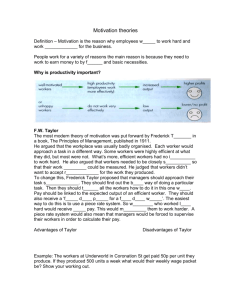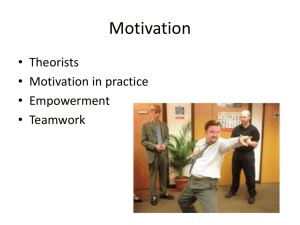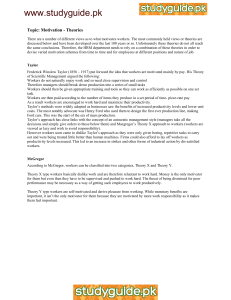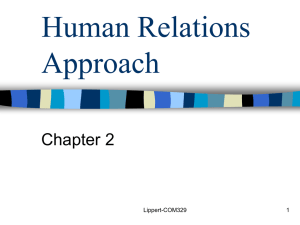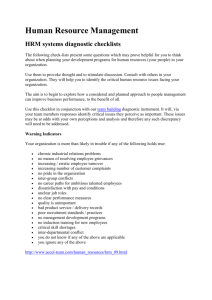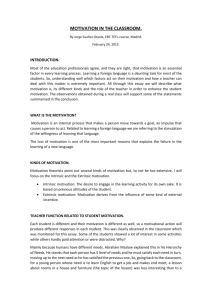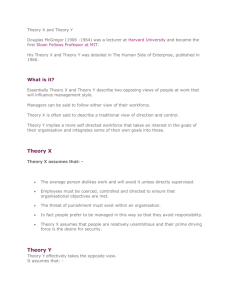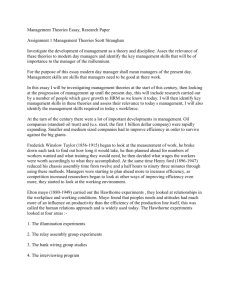Motivation theory
advertisement
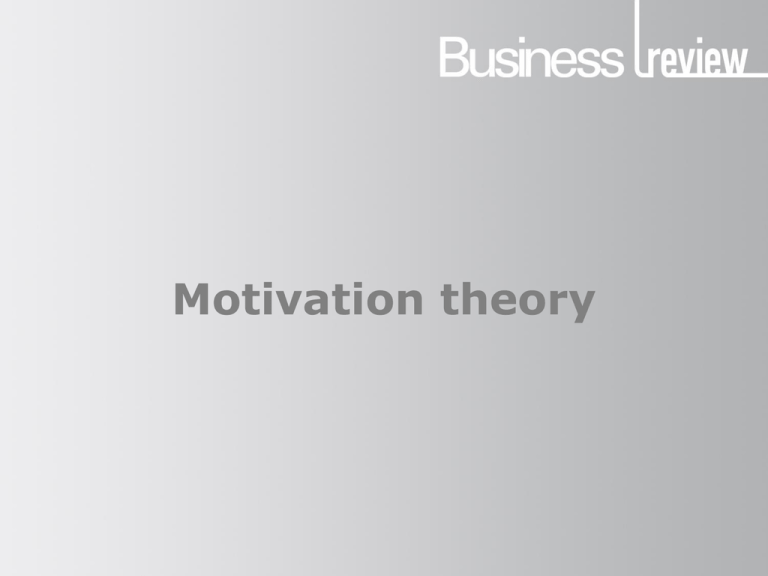
Motivation theory Motivation theory What is motivation? The process of stimulating workers to the act of work. or Motivation is defined as the process that initiates, guides, and maintains goal-oriented behaviours Motivation theory What does the examiner expect? Although specific theories of motivation will not be examined, the candidates should have a good understanding of these theories to support their arguments to consider the influences on motivation. Motivation theory Motivational theorists? There are some key theories that need to be considered: • McGregor’s theory X and theory Y • Taylor and scientific management • Mayo and the human relations approach • Herzberg’s two factor theory • Maslow and the hierarchy of needs Motivation theory McGregor’s theory X and theory Y (1) Theory X and theory Y are theories of motivation created by Douglas McGregor in the 1960’s. They describe two different management viewpoints of the workforce and how it impacts motivation. Motivation theory McGregor’s theory X and theory Y (2) Theory X managers believe employees: • need to be controlled • don’t like work • need to be pushed to be more productive • need incentive schemes • have to be directed to do things they don’t enjoy Motivation theory McGregor’s theory X and theory Y (3) Theory Y managers believe employees: • want to be involved • can think for themselves and make decisions • share ownership of tasks • will find work more rewarding if given responsibility and a variety of tasks • have good ideas • can engage in some form of self-management Motivation theory McGregor’s theory X and theory Y (4) ☹ Theory X workers tend to be unhappy in the workplace. ☺ Theory Y workers are more productive and motivated. Motivation theory Taylor and scientific management Taylor thought that workers were motivated by money. He advocated a ‘fair day’s pay for a fair day’s work’. However, he believed workers would do the minimum amount of work if left to their own devices. Taylor did time and motion studies in a pin factory using a stopwatch. He favoured division of labour and breaking work down into small tasks. This enabled scientific management to know how efficiently workers were carrying out tasks. Motivation theory Mayo and human relations Elton Mayo found that people achieved more when they got positive attention. His studies on human relations found two key areas that motivated workers: 1. Good communication and being involved in decision making. Mayo believed that managers needed to pay attention to each individual and involve them within the business decisions. 2. Group work is key. Mayo thought that workers should socialise together and he encouraged group activities and company social events. If workers feel part of the business they should perform better. Motivation theory Herzberg’s two factor theory In the 1960s Frederick Herzberg interviewed accountants and engineers to find out what motivated and satisfied them at work. He identified two groups of factors that influenced the motivation of workers. Motivation theory Herzberg: hygiene factors These don’t motivate as such, but if they are not good, workers will be unhappy: • company policy • working conditions • pay • supervision • good relations with other workers For example, a worker expects good working conditions. If they are in place they do not motivate but if they are poor then dissatisfaction occurs. Motivation theory Herzberg: motivators These factors do motivate, but only if the hygiene factors are in place: • interesting work • achievement • recognition • personal development and promotion • more responsibility (empowerment, see next slide) Motivation theory Empowering employees Empowerment means giving employees the means by which they can exercise power over their working lives. It can be achieved through informal systems or through the more formal system of autonomous work groups. It involves: • recognising that workers are capable of doing more • making workers feel trusted and confident to carry out jobs and make decisions without supervision • recognising workers’ achievements • creating an environment where workers wish to contribute and be involved Motivation theory Maslow’s hierarchy of needs (1) Maslow stated that workers have unsatisfied needs that must be met in order to motivate them. Motivation theory Maslow’s hierarchy of needs (2) Maslow said that people start by meeting the needs at the bottom of the pyramid. Once they have sorted out those needs, they can move on to the needs of the next level up. Motivation theory Maslow’s hierarchy of needs (3) Physiological needs: basic life needs (air, food, shelter etc.) Safety needs: protection, security, order, law, limits, stability. Social needs: family, love, relationships, work group, affection. Esteem needs: achievement, status, responsibility, reputation. Self-actualisation: personal growth and fulfilment.
